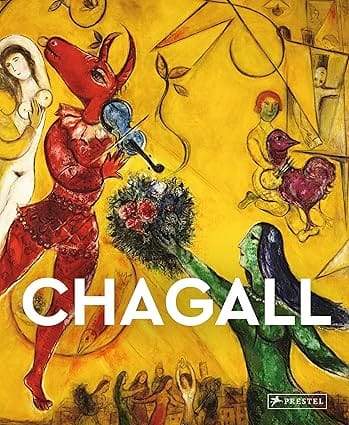WELCOME TO MIDLAND BOOK SHOP!
SHOP FOR
- Contemporary Fiction
- Contemporary Fiction
- Children
- Children
- Comics & Graphic Novels
- Comics & Graphic Novels
- Non-Fiction
- Non-Fiction
- Fiction
- Fiction
Shop No.20, Aurobindo Palace Market, Hauz Khas, Near Church +91 9818282497 | 011 26867121 110016 New Delhi IN
Midland The Book Shop ™
Shop No.20, Aurobindo Palace Market, Hauz Khas, Near Church +91 9818282497 | 011 26867121 New Delhi, IN
+919871604786 https://www.midlandbookshop.com/s/607fe93d7eafcac1f2c73ea4/6468e33c3c35585403eee048/without-tag-line-480x480.png" [email protected]9788197400230 66e18746bbc2260126bfea07 Tigers And Tribes A Silent Conversation https://www.midlandbookshop.com/s/607fe93d7eafcac1f2c73ea4/66e18749bbc2260126bfea0f/91fh5eliaxl-_sy425_.jpg 9788197400230
The tiger, largest of the big cats, is both feared and revered in India, and in several Asian societies. In the last couple of decades, tigers have experienced threat to their survival across the world. However, in countries like India, there has been a remarkable increase in the tiger population. Today India hosts close to 70% of the world’s tiger population. Fifty years ago, on 18th November 1972, the tiger was declared the national animal and Project Tiger was launched in India on 1st April 1973 to save the species from extinction. Several Tiger Reserves were created where tigers could live in safety. Many tribal communities have been an integral part of such reserves. In 2023, the National Tiger Conservation Authority (NTCA) commemorated 50 years of Project Tiger. In collaboration with Sankala Foundation, a non-profit organisation dedicated to mitigating the impact of climate change and promoting sustainability, NTCA organised a three-day art exhibition vividly depicting the deep connection some of the tribal communities have with the big cat. This visual art book features some of the works displayed at the exhibition by various artists from tribal communities. These works illustrate the symbiotic relationship between the communities and the tiger. This book is also an attempt to start a conversation on the intangible heritage surrounding these tiger reserves and the pivotal role the tribal communities play in these habitats. It’s an endeavour to bring centre stage the art of various tribal communities and explore how this art can become a source of livelihood, and an inspiration to other communities about sustaining wildlife habitats.
out of stock INR 559
1 1
Email ID already exists!
Your Current password is incorrect
Password Updated Successfully
Thanks for your Feedback
Tigers And Tribes A Silent Conversation
ISBN: 9788197400230
₹559
₹699 (20% OFF)SIZE GUIDE
Back In Stock Shortly
Sold By: Hauz Khas - Aurobindo Market
Details
- ISBN: 9788197400230
- Author: Bharat Lal S P Yadav
- Publisher: Sankala Foundation
- Pages: 158
- Format: Hardback
Book Description
The tiger, largest of the big cats, is both feared and revered in India, and in several Asian societies. In the last couple of decades, tigers have experienced threat to their survival across the world. However, in countries like India, there has been a remarkable increase in the tiger population. Today India hosts close to 70% of the world’s tiger population. Fifty years ago, on 18th November 1972, the tiger was declared the national animal and Project Tiger was launched in India on 1st April 1973 to save the species from extinction. Several Tiger Reserves were created where tigers could live in safety. Many tribal communities have been an integral part of such reserves. In 2023, the National Tiger Conservation Authority (NTCA) commemorated 50 years of Project Tiger. In collaboration with Sankala Foundation, a non-profit organisation dedicated to mitigating the impact of climate change and promoting sustainability, NTCA organised a three-day art exhibition vividly depicting the deep connection some of the tribal communities have with the big cat. This visual art book features some of the works displayed at the exhibition by various artists from tribal communities. These works illustrate the symbiotic relationship between the communities and the tiger. This book is also an attempt to start a conversation on the intangible heritage surrounding these tiger reserves and the pivotal role the tribal communities play in these habitats. It’s an endeavour to bring centre stage the art of various tribal communities and explore how this art can become a source of livelihood, and an inspiration to other communities about sustaining wildlife habitats.
User reviews
NEWSLETTER
Subscribe to get Email Updates!
Thanks for subscribing.
Your response has been recorded.

India's Iconic & Independent Book Store offering a vast selection of books across a variety of genres Since 1978.
"We Believe In The Power of Books" Our mission is to make books accessible to everyone, and to cultivate a culture of reading and learning. We strive to provide a wide range of books, from classic literature, sci-fi and fantasy, to graphic novels, biographies and self-help books, so that everyone can find something to read.
Whether you’re looking for your next great read, a gift for someone special, or just browsing, Midland is here to make your book-buying experience easy and enjoyable.
We are shipping pan India and across the world.
For Bulk Order / Corporate Gifting
 +91 9818282497 |
+91 9818282497 |  [email protected]
[email protected]
Click To Know More
INFORMATION
ACCOUNT
QUICK LINKS
ADDRESS
Midland Book Shop - Hauz Khas
Shop No.20, Aurobindo Palace Market, Near Church, New Delhi
Shop No.20, Aurobindo Palace Market, Near Church, New Delhi














